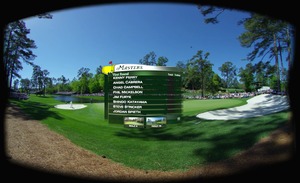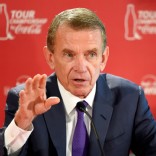Poll: Post-Masters Distance Average & Bifurcation
/Mike Stachura points out at GolfDigest.com how the PGA Tour driving distance average is on course for a new record high in spite of tough driving conditions at Augusta National this year. This is news because we've been told by the governing bodies that things have flatlined, but any further "significant" increase on top of the significant increases of the last twenty years might lead to action.
This is news because we've been told by the governing bodies that things have flatlined, but any further "significant" increase on top of the significant increases of the last twenty years might lead to action.
The average drive of 277.8 for the week at the Masters was the lowest number for the tournament since 2008, and nearly 10 yards off of last year’s average of 286.2. But the PGA Tour average driving distance year to date is still almost 290 yards. The current 289.4 average marks the highest all-time, 1.6 yards over last year’s high mark.
But here's the one that'll make men in navy sweat.
Curiously, the PGA Tour record for average driving distance at the end of any year was set in 2011 at 290.9, but by Masters week that year, the average was 285.3, four yards shy of this year’s hot pace.
Now that more people have more understanding of the issues ramifications than ever thanks in part to an economic crisis, water issues, the lack of pleasure found in a 7,500 yard couse and a greater understand that distance is all relative for the elite player, it seems more people than ever understand the sensibility of bifurcating the rules between elite and hacker.
Adam Scott's recent comments to PGATour.com's Brian Wacker about limiting driver head size became more appealing to me (in light of what he said about the change in the driver's role). I don't know how much of an impact distance-wise such a size reduction would have, but given all of the whining about how difficult it would be to regulate the ball, this could be a solution that is more easily enforced and allow manufacturers to sell something to wannabe pros (and slightly larger versions of the same club to the general public).
But most of all, such a reduction in driver head size could return the reward for driving the ball with length and accuracy, while allowing the sport to put an end to the unproductive expansion of its 18-hole footprint.





















